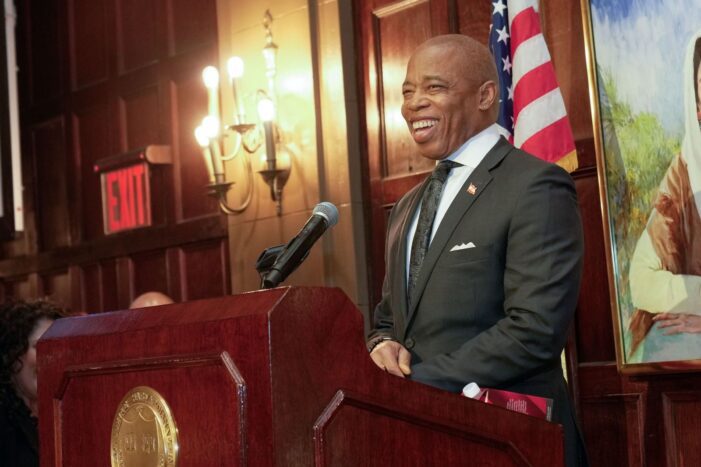By: Jose M. Reyes Taveras | Photo courtesy: Mayor’s Flickr
New York City has reached a historic record number of small businesses while expanding access to seed capital, loans, and contracts for entrepreneurs.
The heartbeat of the neighborhoods
From the corner bodega to the local restaurant and beauty salon, small businesses are the backbone of everyday life in New York City. In recent years, the city has seen steady growth in new ventures, alongside the recovery of long-standing businesses that survived the pandemic.
Today, more than 183,000 small businesses operate across the five boroughs —a historic high, representing an increase of over 62,000 businesses since 2022. As Mayor Eric Adams has said, “Jobs are up, crime is down.” This is a phrase he has repeated in multiple forums to emphasize that economic growth and public safety are the foundation that allows local merchants to thrive and sustain neighborhood life.
Capital and Assistance
This growth is no coincidence. Since 2022, the City has invested more than $265 million in grants and loans to help entrepreneurs recover and expand. Also, the NYC Future Fund launched with an initial $10 million to support BIPOC and women entrepreneurs.
Other tools —including co-investment funds, sector-specific accelerators, and free legal/accounting clinics— have reduced entry barriers and allowed thousands of immigrant entrepreneurs to formalize their businesses. These programs have been particularly impactful in the Bronx, Queens, and Upper Manhattan, where language access and guidance with permits have been essential.
Results on the Ground
The impact is already visible: more restaurants and shops opening, more storefronts reoccupied, and stronger neighborhood corridors. According to city data, small businesses currently employed more than 3.1 million New Yorkers, representing nearly half of the city’s private workforce.
A notable example comes from the Department of Transportation (DOT) under Commissioner Ydanis Rodríguez, which increased the share of contracts awarded to M/WBEs from just 11% in 2021 to 34% in 2024. This leap demonstrates how targeted procurement reforms can open opportunities for entrepreneurs historically excluded from the city’s supply chain. Across the city, total M/WBE contracting reached $6.4 billion in FY2024, the highest in New York City’s history.
Community Perspective
Beyond official programs, Mayor Eric Adams personally visited dozens of small businesses to listen directly to owners’ needs and concerns. These conversations helped fine-tune policies, ensuring resources address real-world challenges rather than staying on paper.
While some voices advocate for policies disconnected from community priorities —such as legalizing prostitution or passing laws that make it easier for repeat offenders to be released— the mayor has remained focused on supporting the businesses that generate most of the jobs in working-class neighborhoods. Business owners emphasize the difference: access to affordable credit and free advisory services.
“Before, you were on your own. Now, they come into the community with workshops in Spanish and step-by-step support for permits,” said a Washington Heights shopkeeper at a recent forum.
What Lies Ahead
Looking ahead, the challenge is to expand revolving funds to ensure a continuous flow of capital, shorten permitting times, and scale up mentorship for public procurement, so that more small businesses can sell directly to the City.
The goal is not only quantitative recovery but also qualitative growth: stronger, more inclusive, and more sustainable businesses across New York City.


